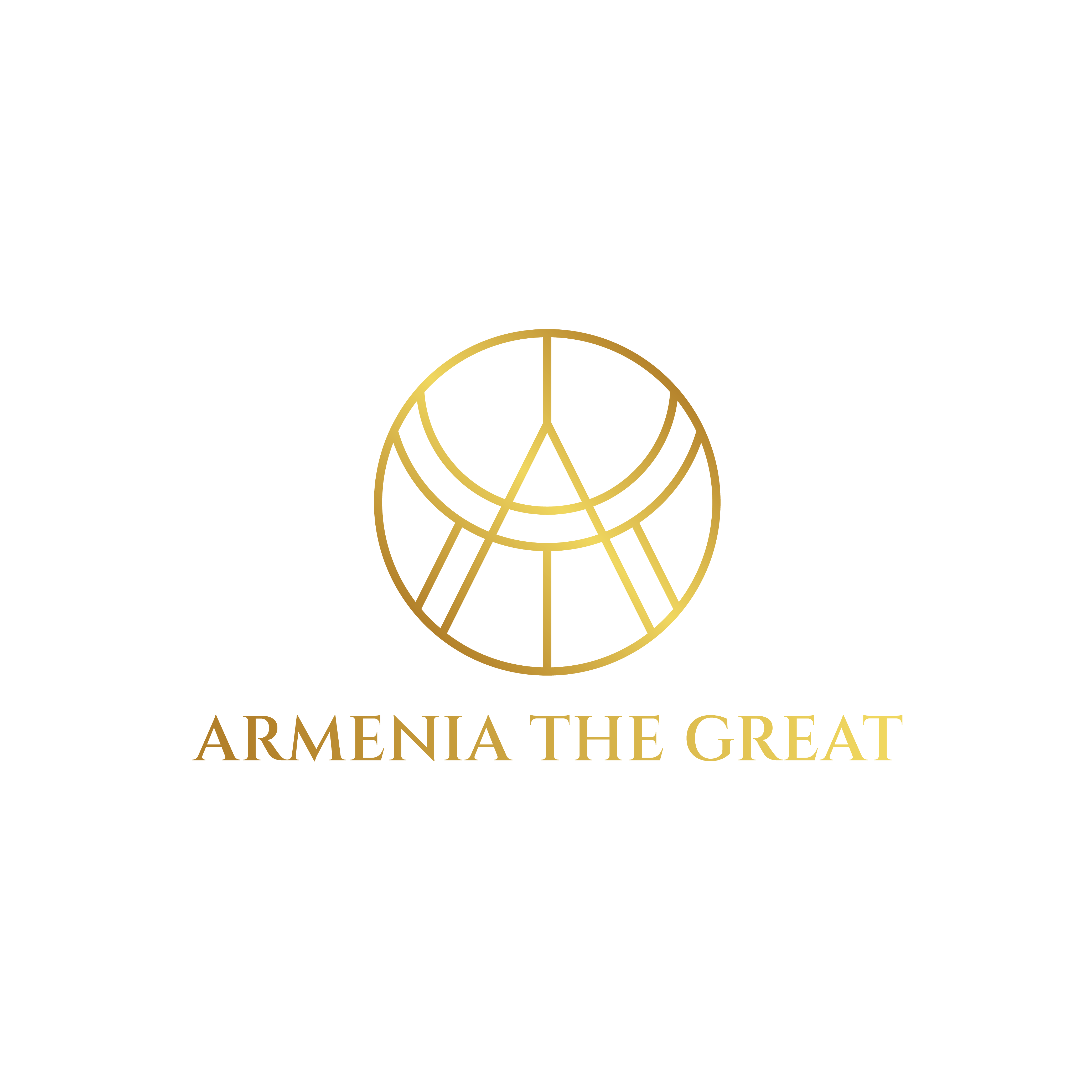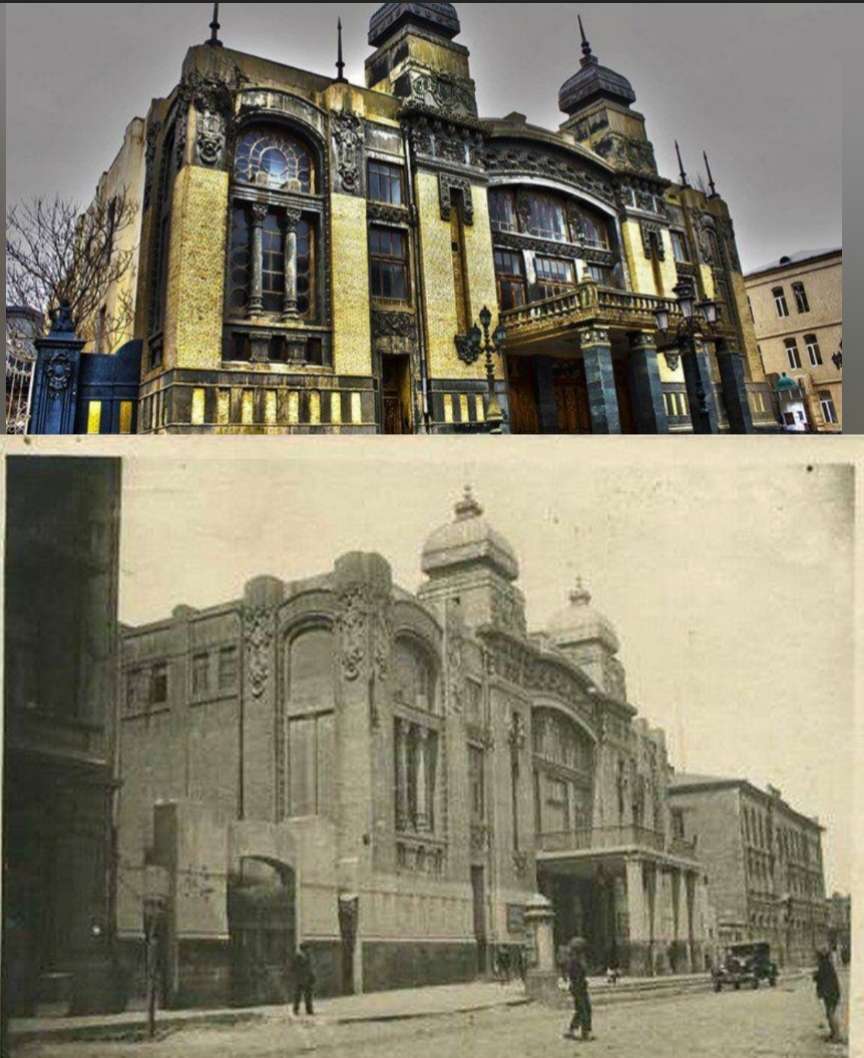At the end of the 19th century, a number of new Armenian companies were formed in Baku over a short period of time. Due to their knowledge and energy, Armenian entrepreneurs gained great influence, playing an important role in the economic development of the entire Armenian Baku province.
These are “Mirzoyan and brothers”, “Mantashyan and comrades”, “Aragats”, “Araks”, “Gukasov brothers”, “Lianozov and comrades”, “Aramazd”, “Ararat”, “Masis”, “Astghik”, “Syunik” “, “Aralo-Caspian” and dozens of other companies owned by Armenians were involved in the oil industry and had their own means of transportation, including sea.
In total, in 1912 there were 66 ship owners in Baku, among them companies and private owners, 14 of whom were Armenians and had 24 ships. Hakob and Hovhannes Avetyan (“Menastan”), O. Adamyan (“Vagan”), “Armenian Shipping Company” (“Ashot Erkat”, “Amasia”), “Volga Company” (“Artsiv Vaspurakani”), “Caspian Trade industrial company” (“Vaspurakan”), etc.
Even the Caucasian Turks (hereinafter referred to as the Azerbaijanis) called their ships with Armenian names, for example, the ship of Ashurbekov and Jafarov was called “Avetik”, Babashieva – “Masis”, Kulieva – “Arshak”, Mamedov – “Ararat”.
The Armenians launched extensive economic, trade and construction activities in Baku. Armenian oil industrialists played a large role and significant weight in oil production in Baku.
The first industrial oil well in Baku, which began operating in 1869, belonged to O. Mirzoyan.
An outstanding representative of Armenian entrepreneurs in Baku was Alexander Mantashyan, who enjoyed great authority in the oil industry. In February 1894, an agreement was signed between the Armenian group of A. Mantashyan and the “Association of Baku Kerosene Plant Owners”, according to which Armenian entrepreneurs were able to freely enter the international market.
In 1897-1907, Armenian industrialists (A. Mantashyan, Ter-Akopov, Ter-Margaryan, etc.) built the world’s first Baku-Batumi oil pipeline. As of 1907, out of 448 million poods of oil produced in Baku, 54.4%, and in 1917, out of 168 million poods of oil, 53% of the total volume was produced by Armenian companies.
It was the Armenian oil industrialists who contributed to the transformation of Baku into a large industrial center.
Armenian businessman G. Lianozyan was considered the largest entrepreneur involved in fishing and seafood. Before the outbreak of the First World War, his fishing vessels were equipped with the best technology.
It should be noted that the Armenians were not only involved in economic activities, but also themselves created a technical base that contributed to the development of business.
41 factories were engaged in the production of drilling rigs and pipes, 19 of them were Armenian. 194 mechanical workshops were involved in oil production, 95 of which were owned by Armenians.
In 1904, there were two tobacco factories in Baku: one of them belonged to the Mirzabekyan brothers, the other to Sargis Karagozyan and Avet Arakelyants. In 1914, there were seven tobacco factories on the territory of modern Azerbaijan, all of them owned by Armenians.
In 1891, the Piliposyants brothers opened the first and only chocolate factory in the Caucasus.
In the same year, A. Kharajyan opened the first mirror factory.
The only one in Transcaucasia was also the Melik-Gulambaryan plant of natural fruit juices and mineral waters.
To solve the problem of drinking water for the residents of Baku, merchant M. Sahakyan built a number of reservoirs at the mouth of the Kura River, laid underground pipes, and even supplied the city with water, which he brought by chartered ships.
The undisputed leader in manufacturing trade was the “Trans-Caspian Trade and Industrial Organization”: president – S. Ter-Oganyan, board members – N. Sarukhanyan, Ov. Tumanyan, J. Ter-Israelyan, G. Shkhyants.
Armenians had significant influence in the production and processing of silk and cotton. In 1907, out of 154 manufacturing enterprises in Baku, 89 belonged to Armenians.
The largest trading house in the city belonged to the Tumanyan brothers.
Armenians also played a large role in the financial and banking system of Baku.
In 1875, the directors of the “Mutual Loan Organization” were A. Tavrizyan, M. Mamikonyan, and later the Ayvazyan brothers. In 1902, another financial institution was created in Baku – a city credit organization, the president of the board of which was Russian, and the directors were Armenians – A. Ayvazyan, A. Khan-Agyan.
Banknotes of the Baku authorities have been preserved, on which there were inscriptions in Armenian.
The architectural appearance of Baku was largely formed with the active and effective participation of Armenian architects and builders educated in St. Petersburg.
In the construction of Baku, the contribution of architects G. Ter-Mikaelyan, V. Sargsyan (Sarkisov), N. Bayev, G. Ter-Hovhannisyan (Kajaznuni), F. Aghalyan, A. Kandinyan, M. Ter-Grigoryants was especially noteworthy.
Armenian architects, rethinking the new style penetrating from Russia, created unique architectural and construction models in Baku.
Nikogayos Gevorgovich Bayev (Russian architect of Armenian originalso made a great contribution to the architecture and urban planning of Baku at the beginning of the twentieth century. In 1911-1918 he was the chief architect of Baku.
In 1910, the Mailov Brothers, a doctor and businessman, decided to build a palace of acting and creativity.
Nikogayos took upon himself the creation of the building project and its cultural design. In record time – less than a year – a phenomenal structure of a classical character was erected: with a vestibule, auditorium and stage. Incredible equipment for the beginning of the 20th century in the form of air heating, ventilation and electric lighting did not prevent the construction from being completed on time. The audience bowed their heads before the talent and hard work of the architect and the incredible perseverance of the Mailovs.
According to his design, in 1913 the building of the Mailyanov Theater (now the opera and ballet building), a hospital complex (19 infirmaries with 24 buildings), several schools, a gymnasium, residential buildings of Salimanov, Sheremetyev and others, and a railway station in Sapunchi were built (1927), surgical hospital named after Semashko, Armenikend district, which was named after him, etc.
Thus, the Armenians of Baku at the end of the 19th and beginning of the 20th centuries actually occupied leading positions in oil production, trade, various industries, as well as in the financial and banking spheres.
All facts presented in this publication are objective, true and historical.
And these facts eloquently prove that less than 100 years ago the city of Baku was actually an Armenian industrial center and many historical and industrial buildings and structures there are of Armenian origin. It is difficult to overestimate the role and impossible to list all the Armenians who contributed to all the achievements of Azerbaijan.
Three times in the history of the city (in 1905, 1918 and 1990) Baku turned into an arena of bloody anti-Armenian pogroms. The late Soviet wave of anti-Armenian massacres began on January 13, 1990. A huge crowd shouted slogans such as “Glory to the heroes of Sumgait!”, “Long live Baku without Armenians!” Two days of pogroms began. As in Sumgait, the attackers’ actions were characterized by sophisticated brutality: the area around the Armenian quarter became the scene of massacres, people were thrown from the balconies of the upper floors, crowds attacked the Armenians and beat them to death. Most of the victims died from beatings and knife wounds; there were no gunshot wounds.
The Armenian community of Baku, which had developed over centuries, ceased to exist. The Armenians left this city, leaving in it the fruits of their labor, their homes, property, the graves of loved ones and a piece of their hearts.
400 thousand Armenians, having left Baku and other cities of Azerbaijan, left here not only their homes, but also cultural and material values created by many generations, which this republic enjoys and is proud of, cynically denying the participation of Armenians in their creation. The Armenians influenced the cultural appearance of Baku and gave a unique flavor to its life.
After ethnic clenasing deportations pograms and massacares of Armenians in occupied Azerbaijan no Armenians resides there. Currently in occupied Azerbaijan in fact, there is no information about the historical contribution of Armenians to the development of the city of Baku, on the contrary, the authorities of Azerbaijan. are making gigantic efforts and actions in order to eradicate the historical past of Armenians in the life of Baku and consign it to oblivion.
The historical past of any nation or people is a mirror. And any action to disseminate false historical facts, as well as change history, is fraught with biased development of this state and the future of the nation can be reflected as if in a distorting mirror.

